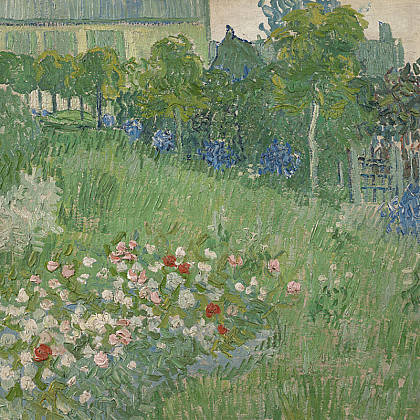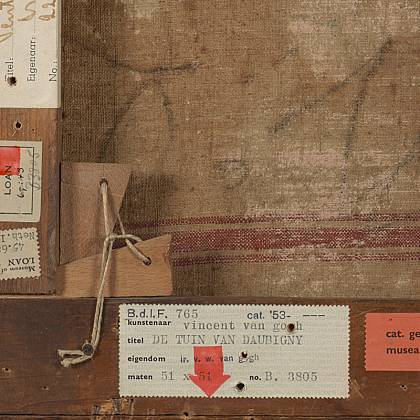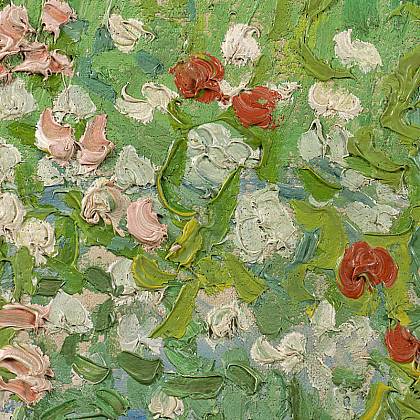Exploring the subject
Daubigny's Garden
‘I have an idea for doing a more important canvas of Daubigny’s house and garden, of which I already have a small study.’
From the time Van Gogh arrived in Auvers, he wanted to depict the landscape painter’s garden. He first made the small painting to explore the subject. Then he used a large, wide canvas, painting the garden over the entire width. He also made a repetition (copy) of this version. Theo received a letter with a sketch:
Perhaps you’ll see this croquis of Daubigny’s garden – it’s one of my most deliberate canvases.
Letter to Theo van Gogh. Auvers-sur-Oise, Wednesday, 23 July 1890.
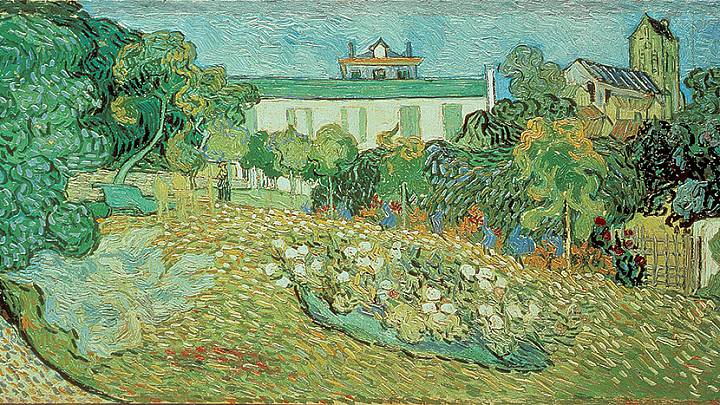
Compare the large painting and the sketch of Daubigny’s garden.
Foreground of green and pink grass... In the middle a bed of roses. To the right a hurdle... a row of rounded yellow lime trees. The house itself in the background, pink with a roof of bluish tiles.
Letter to Theo van Gogh. Auvers-sur-Oise, Wednesday, 23 July 1890.
Canvas format
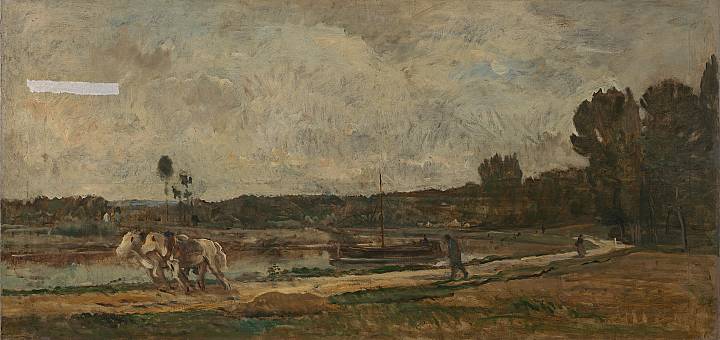
Van Gogh was inspired to work in this wide format by the paintings of Charles Daubigny, who liked to work on similarly large canvases. This was not a standard format, but Van Gogh was used to cutting his canvases from a roll and stretching them himself. The unusual format worked particularly well for panoramic views. It was very practical to make each painting one metre wide, because that was precisely half the width of his roll of canvas.
Charles-François Daubigny 1817-1878
Towpath on the Banks of the Oise River, c. 1875
oil on canvas, 89 x 184 cm
The Mesdag Collection
Painting outdoors
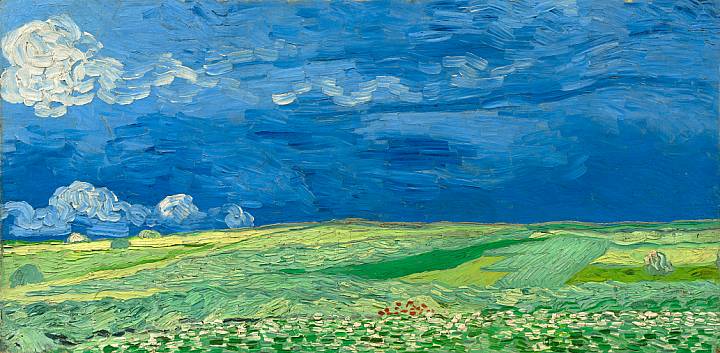
The French artist Daubigny, a popular landscape painter, belonged to an earlier generation than Van Gogh. He often worked on his paintings on location and in the open air. For that reason, he is seen as a major forerunner of the Impressionists. Their speciality was working outdoors and painting spontaneous impressions of the landscape with quick brushstrokes.
Van Gogh painted thirteen landscapes on a wide canvas in Auvers.
Wheatfield under Thunderclouds, 1890
oil on canvas
50.4 x 101.3 cm
Van Gogh Museum, Amsterdam (Vincent van Gogh Foundation)
